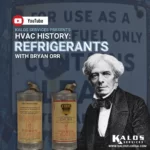Table of Contents
After calling a professional, you don’t want to ask yourself: “Could I have fixed that?”
There are very few things that feel as bad as calling in a professional having them flip a switch and charge you. You have just spent quite a bit of money and can feel embarrassed. Or, in a professional situation, you may also have a difficult time justifying this cost to whomever you report to. Usually, you can prevent embarrassment and losses with a few easy steps.
Electrical
#1 Check Your Breakers: Breakers can trip for various reasons, some of which may be one-time instances and not causes for concern. Before calling a professional, I would recommend locating and resetting any tripped breakers. Bear in mind that there will typically be an inside panel and one outside by the meter. If the breaker immediately or consistently trips, you still may want to take one more step before contacting a professional: unplug everything and turn all switches off in the effective area. Then, you can reset the breaker. If they hold, try plugging in items one at a time, then flip switches back on one at a time. It’s time to call a pro if the problem persists or the breaker trips with something you cannot just unplug.
#2 Ground Fault Circuit Interrupters (GFCIs/GFIs): A GFCI’s primary function is to check for a voltage imbalance, so it is pretty normal for these to trip intermittently. Unless they are tripping more frequently than once a week, a GFCI is usually not a necessity to repair. GFCIs will be installed for all outlets in bathrooms, kitchens, garages, and outside the home. Keep in mind that one outlet can run up to 10 protected outlets. So, if you have an outlet not working in one of these locations, check and reset all GFCIs in the house before calling an electrician.
Air Conditioning
#1 Frozen A/C system: An A/C will freeze for three reasons: low temperature, low indoor airflow, or low refrigerant. If you have a frozen A/C, make sure of two things before calling someone: make sure the filter in the unit isn’t dirty, and make sure the thermostat is not set below 72°F. If you suspect either a dirty filter or low set-point were the cause, set the system to OFF and fan to ON for three hours. Then, restart the system, and it may resume normal operation.
#2 Backed-up drain: Your A/C will condensate up to two gallons of water an hour. The condensate will run from the indoor unit and drain outside usually via a 3/4″ PVC pipe. If sediment plugs up this pipe, it will either back up into the house, causing a mess, or newer A/C units will have an overflow shutoff or “float” switch. If you have a blank thermostat or a system doing nothing, you should first check this “float” switch for water. The float switch may be full. If so, empty it. Hook a shop vac to the outlet outside, pull the sediment out, refill the drain trap, reinstall the float switch, and test the system.
#3 Tripped breaker. See above for testing a tripped breaker.
#4 Thermostat batteries: If the thermostat is blank, make sure the batteries are not dead.
Water Heater
#1: Pilot light is out: On gas water heaters, if there has ever been an interruption in gas service to the property (even briefly), the pilot will need to be relit. Follow the instructions on the heater to do this.
#2: Tripped breaker: Typically, a tripped breaker means that an electric element is shorted. However, it is not a bad idea to try resetting it. See if the problem still occurs.
#3: Tripped high limit: All electric water heaters will have a high temperature cutout safety on the upper thermostat. If the high limit trips repeatedly, there is a problem. (If however, you only have to reset it occasionally, it may not be worth repairing) This safety reset is a red circular button behind the upper access panel on the side of the heater.

Pool Heater
#1: Ensure that the pool pump is running and does not have a very dirty filter.
#2: Make sure all water is flowing through the heater and that there aren’t any valves diverting water away from the heater.
#3: Check to make sure all breakers are on.
#4: If there is cold air blowing out of the top of a heat-pump heater, it is operating correctly and may just not be at optimal temperature yet. This doesn’t necessarily mean its running at full capacity but would mean it is at least somewhat heating.
#5: Make sure the gas valve is on.






